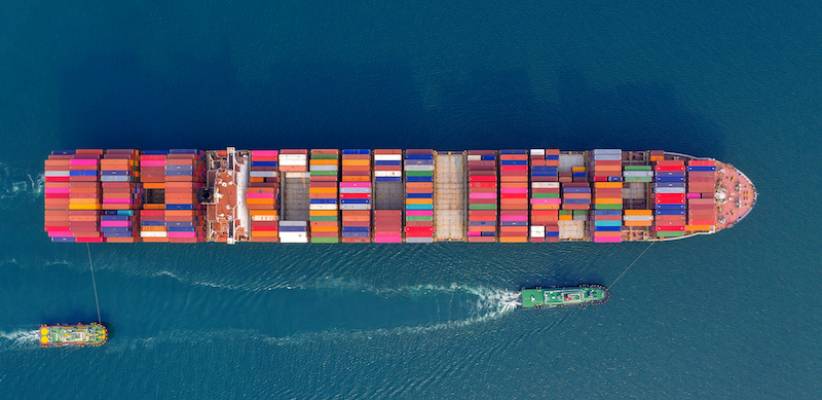Interests in developing ships of hydrogen fuel cell systems are growing in China, although the sector is still in its infancy stage compared to those in the European countries.
Has Fuel Cell Ship R&Ds Finally Took off in China?
Research and development activities for hydrogen-powered ships have been increased in the past six months.
In a short span of two months, two R&Ds are signed to explore hydrogen fuel cell applications in yachts. One was among YaGuang Technology and two subsidiaries of Qingyan Huake (QYHK). And a similar multiple-party deal was inked among Guangxi New Energy Ship Engineering Research Center and others to develop fuel cell ships for tourism purposes.
Notably, QYHK is a technology enterprise backed by (and linked to) several research teams of Tsinghua University, including the leading hydrogen R&D team of professor Ouyang Minggao.
Besides the two deals, in May, Foshan city of Guangdong launched a “Xianhu I” cruise ship powered by a 30KW fuel cell system. The system is provided by Peal Hydrogen.
This development follows the milestone in Jan. 2021, when Dalian Maritime University launched China’s first-of-this-kind fuel cell yacht “Xinhu” powered by a 70KW cell system.
The frequent updates seem to imply a rising interest in the field, although all of the R&Ds focused on smaller-scale yachts or cruise ships in the river system.
Is hydrogen for shipping going to take off soon in China as well?
National Policy to Support Hydrogen-powered Ships
The reality is: the national-level policy support for applying hydrogen in shipping is still very limited.
The highest-level national policy vouching for the hydrogen-powered ship has been the Inner River Shipping Development Guidelines (内河航运发展纲要), released by the Ministry of Transportation in 2020.
To combat the pollution issue and cap emissions in the river shipping sector, the ministry calls for promoting new energy alternatives to replace the conventional diesel-fueled ships in domestic rivers.
“Electric and fuel cell” solutions are encouraged by the policy, although—notably— the policy emphasized the role of LNG ships.
There is also no official targets set for hydrogen-powered ships, given the infancy of the sector. Researchers of the ministry suggest launching 600 fuel cell ships by the end of 2025, of which 400 are modified and 200 could be new-builds. But these figures are more of estimated potentials than compulsory targets.
China’s Ministry of Industry and Information Technology (MIIT) offers some funding programs related to hydrogen ships, such as the “high-technology” ship R&D program.
However, as the FCV Application Demonstration Program unfolds, China’s near-term focus for hydrogen R&Ds will remain to be road transportation, in our view.
Local Governments in the Lead for Hydrogen Ship
Despite the limited policy support on the national level, some local governments have taken actions to support fuel cell technology development for the maritime and shipping industry.
Around ten regional governments—both provincial and city level—have vouched for fuel cell R&Ds and applications in ships.
Coastal provinces Guangdong and Zhejiang are the two “heated” areas.
Guangdong province last year set a target to “achieve the first fuel cell ship demonstration before 2022,” upon the release of its Fuel Cell Vehicle Industry Development Action Plan.
Three cities of the southern province—Maoming, Guangzhou, and Foshan—have developed separate policies to support hydrogen ships. As mentioned, Foshan has achieved the target by launching the 30KW fuel-cell-powered cruise in water.
Maoming and Guangzhou promised to kick off some demonstration within the next five years, while Foshan has set two concrete targets—to launch 5 and 20 hydrogen-powered cruise ships by 2025 and by 2030.
Zhejiang province is another region to witness significant break thoughts in hydrogen ships in the 14th Five-year plan period. While cities in Guangdong focus on fuel cell application in the river transportation system, their peers in Zhejiang show more of an appetite for maritime applications.
Governments of three cities—Zhoushan, Jiaxing, and Pinghu—support maritime applications upon the release of municipal hydrogen development plans.
Zhoushan is the most bullish among the trio. It looks to have more than 20 and more than 100 hydrogen-powered ships by the end of 2022 and 2025. The island city provides the most solid policy support for hydrogen maritime R&Ds. Hydrogen ships could be embarked for committing between the island city and the mainland.
Fuel Cell Ship Funding
More cities have delivered policies supporting hydrogen ships in the past months, Energy Iceberg’s Hydrogen Policy Navigator has discovered.
Dalian city of Liaoning set up a Hydrogen Industry Development Funding Program totaling ¥1b to support hydrogen R&Ds in the next five years.
One of the exemplary areas supported by the funding would be fuel cell ships. The program pledged to provide:
- funding for fuel cell R&Ds related to hydrogen-powered ships (cap at ¥10m per year)
- funding for fuel cell manufacturing investment related to hydrogen-powered ships (cap at ¥30m)
- a purchase subsidy for small-size fuel cell ship (cap at ¥2m per ship )
By the program, the northern coastal city has become the first to fund fuel cell ship R&Ds.
Given the lack of national funding, hydrogen-powered ships are unlikely to see an extensive scale application in the next five years, in our view. As electric generator ships have picked up momentum, hydrogen ships are facing more competition.
Nevertheless, some more regions could follow the footstep of Guangdong, Zhejiang, and Dalian. Those coastal cities and inner river transportation hubs with a strong shipping manufacturing and maritime research focus are the most likely regions to offer support.
Existing Hydrogen-Powered Ship Designs and Players
Already, a handful of hydrogen-powered ships have been in the waters, most of which are smaller-sized ships.
China State Shipbuilding Corp (CSSC) is the leading player in the field. The firm’s subsidiary 712 Institute completed a mooring test for a ship equipped with a 70KW cell in the waters of Yangzhou. Previously, CSSC’s 605 Institute has brought forward a 500KW fuel cell design for a prototype hydrogen-powered cargo to embark in the Pearl River.
Currently, CSSC is the leading player in fuel cell ship R&Ds in China, whose actives are supported and funded by the MIIT and Guangdong governments.
A few universities, institutes and companies have been involved in the fuel cell development for the shipping industry. Besides CSSC, Shanghai Maritime University, Dalian Maritime University, Wuhan Troowin have launched their pilot designs.
While no massive progress at sight, it is clear that more players are joining the game. The shipping industry is likely to benefit from a spill-over effect of China’s hydrogen FCV hype.
Hydrogen’s shipping application is most likely to occur first in China’s inner river system (Pearl River, the Grand Canal, Yangtze River) and a few island regions.
Source: Energy Iceberg
Photo: Sym-Naval

